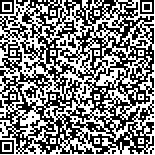|

二维码(扫一下试试看!) |
| Soft Sensor Modeling of Papermaking Effluent Treatment Processes Using RPLS |
| |
| DOI:10.11980/j.issn.0254-508X.2016.10.007 |
| Key Words:recursive partial least squares partial least squares soft sensor modeling papermaking effluent treatment |
| Fund Project:南京林业大学高层次人才科研启动基金(No.16310-5996);江苏省制浆造纸科学与技术重点实验室开放基金项目(201010);江苏高校优势学科建设工程资助项目(PAPD)。 |
| Author Name | Affiliation | | 杨 浩1 | 1.南京林业大学江苏省制浆造纸科学与技术重点实验室,江苏南京,210037 | | 莫卫林1 | 1.南京林业大学江苏省制浆造纸科学与技术重点实验室,江苏南京,210037 | | 熊智新1 | 1.南京林业大学江苏省制浆造纸科学与技术重点实验室,江苏南京,210037 | | 黄明智2 | 2.中山大学水资源与环境系,广东广州,510275 | | 刘鸿斌1,* | 1.南京林业大学江苏省制浆造纸科学与技术重点实验室,江苏南京,210037 |
|
| Hits: 5540 |
| Download times: 1769 |
| Abstract:Soft sensor modeling methods based on partial least squares (PLS) and recursive PLS (RPLS)were used to predict effluent chemical oxygen demand(CODCr) and effluent suspended solids(SS) in a papermaking wastewater treatment process. PLS is unsuitable for the systems with non-linear characteristics and external disturbances. The results showed that the mean absolute percentage error(MAPE),root mean square error(RMSE), and squared correlation coefficient(R2) for CODCr using PLS were 5.3832%, 4.6878, and 0.5892, respectively, and they were 1.3861%, 1.8792, and 0.9221, respectively using RPLS. In terms of SS, the MAPE, RMSE, and R2 were 2.5962%,0.7412, and 0.6651, respectively when using PLS, and the three indices using RPLS were 0.6795%, 0.2198, and 0.9627, respectively. These results indicated that the RPLS model had better prediction performance and higher accuracy compared to the PLS model. |
| View Full Text HTML View/Add Comment Download reader |
|
|
|